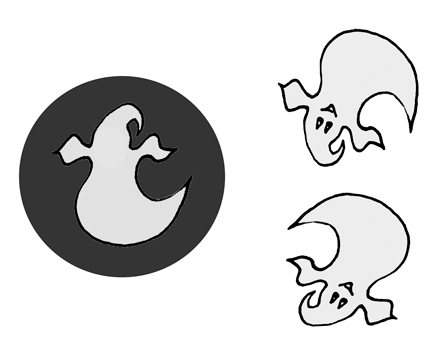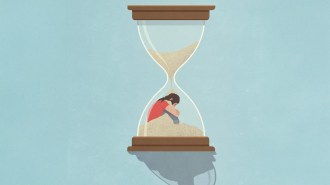Mental rotation gears up by age 5 for both boys and girls
Math-related visualization skill emerges rapidly in preschool years
Cartoon ghosts have scared up evidence that the ability to visualize objects in one’s mind materializes between ages 3 and 5.

When asked to pick which of two mirror-image ghost cutouts or drawings fit in a ghost-shaped hole, few 3-year-olds, a substantial minority of 4-year-olds and most 5-year-olds regularly succeeded, say psychologist Andrea Frick of the University of Bern, Switzerland, and her colleagues. Girls performed as well as boys on the task, suggesting that men’s much-studied advantage over women in mental rotation doesn’t emerge until after age 5, the researchers report Sept. 17 in Cognitive Development.
Mental rotation is a spatial skill regarded as essential for science and math achievement. Most tasks that researchers use to assess mental rotation skills involve pressing keys to indicate whether block patterns oriented at different angles are the same or different. That challenge overwhelms most preschoolers. Babies apparently distinguish block patterns from mirror images of those patterns (SN: 12/20/08, p. 8), but it’s unclear whether that ability enables mental rotation later in life.
Frick’s team studied 20 children at each of three ages, with equal numbers of girls and boys. Youngsters saw two ghosts cut out of foam, each a mirror image of the other. Kids were asked to turn the ghosts in their heads and choose the one that would fit like a puzzle piece into a ghost’s outline on a board. Over seven trials, the ghosts were tilted at angles varying from the position of the outline. The researchers used three pairs of ghost cutouts, for a total of 21 trials.
The number of kids who chose the correct ghost on at least 14 trials rose from two at age 3 to eight at age 4 and 19 at age 5. The average percentage of correct choices increased from 54 percent at age 3 to 69 percent at age 4 and 83 percent at age 5.
A similar experiment with 4- and 5-year-olds using drawings of ghosts rather than puzzle pieces also found improvements with age. This finding suggests that a paper-and-pencil test of mental rotation can be used to gauge preschoolers’ spatial abilities, Frick says.
“This is an interesting new way to measure mental rotation ability,” says University of Chicago psychologist Susan Levine. It’s unclear, though, whether 3-year-olds were unable to mentally rotate objects or failed to understand the task, she notes.
A larger study is needed to confirm that preschool-age girls and boys mentally rotate objects equally well, Levine adds.







